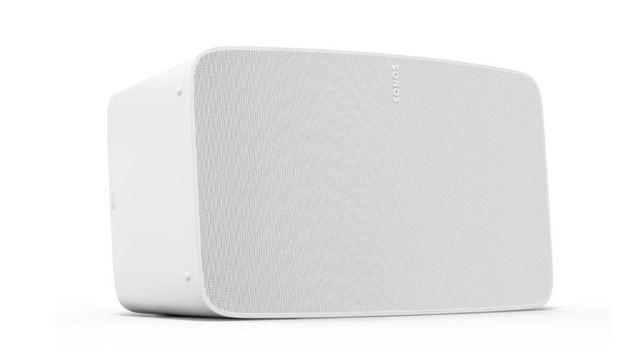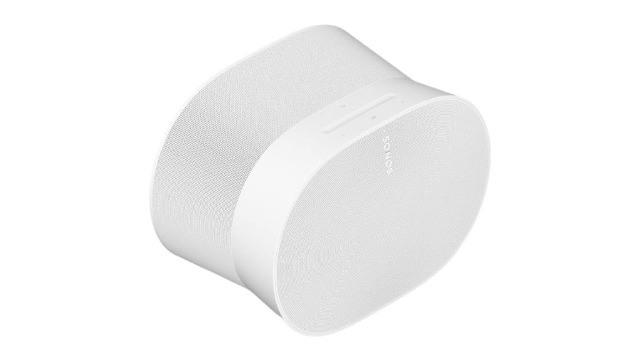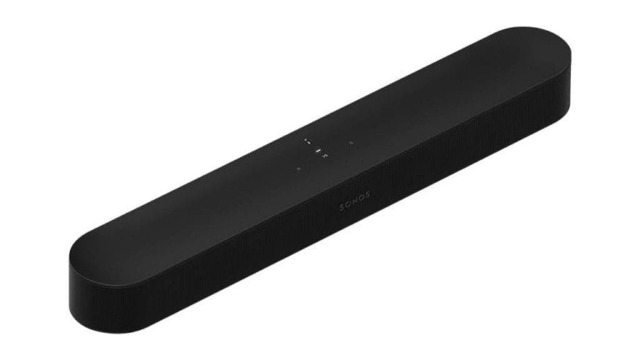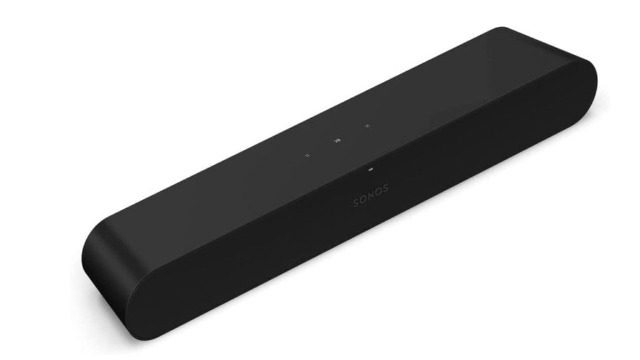I used to think my music sounded fine. I had decent speakers, my playlist was well-curated, and I could vaguely hear the background guitar in that one Coldplay track. Then I listened to music on a Sonos, and... well, let’s just say ignorance was bliss.
Sonos has quietly (and ironically, quite loudly) built a reputation for delivering exceptional wireless audio that doesn’t just fill a room — it transforms it. Whether you're an audiophile, a movie buff, or someone who simply wants their morning coffee accompanied by rich sound, there's a Sonos for you.
Here’s my rundown of five standout Sonos speakers and soundbars, what they bring to your ears (and eyes), and where they could still step up their game.
Top 5 Sonos Speakers

Let’s start with a beast. The Sonos Five isn’t messing around — it’s tuned by Giles Martin (yes, that Giles Martin — son of Beatles producer George Martin), and it shows. This speaker uncovers layers in your music that you didn’t even know existed.
Inside are three high-excursion woofers for that clean, deep bass you feel in your chest and a sealed design that cleverly avoids reverb. Add in angled side tweeters and a dedicated center tweeter for vocals, and you’re essentially bringing a high-end studio into your living room.
What stands out: Immersive stereo imaging, thumping bass, studio-quality sound
What’s missing: No built-in voice assistant or Bluetooth — strictly WiFi unless paired

If you’ve ever watched an action movie and felt like your living room lacked the “boom,” let me introduce you to the Sonos Arc. This HDMI-enabled soundbar supports Dolby Atmos, giving you a full-on 3D soundscape — so when a chopper flies overhead in a scene, it actually sounds like it’s passing above your sofa.
Beyond the tech specs, it’s the Trueplay tuning that’s really clever. It tailors the sound to your room’s acoustics — like a sonic tailor measuring your space before delivering the perfect fit. Bonus: You can control it using your TV remote, your voice, or the Sonos app.
What stands out: Mind-blowing Atmos sound, room-tuned performance, sleek design
What’s missing: Premium price tag — and it needs a TV with eARC for full features

Imagine music not just playing at you, but swirling around you — behind, above, to your left. That’s the Sonos Era 300. With six strategically placed drivers and Dolby Atmos Music support, this speaker turns your playlist into a spatial audio experience.
The sound radiates in every direction thanks to custom-designed waveguides, which basically act like traffic cops for sound, ensuring it spreads to every corner of your space. Add Bluetooth support, WiFi, and even an aux-in option for your vintage turntable, and you've got serious flexibility.
What stands out: Spatial audio with real depth, Bluetooth & line-in options, next-gen design
What’s missing: No Google Assistant support (only Alexa), and a slightly steep learning curve for setup

You wouldn’t expect a bar this slim to handle Dolby Atmos, but the Beam Gen 2 delivers — and then some. It’s 40% faster than the first-gen Beam thanks to a new chip that opens up two additional audio paths for virtual surround.
It’s ideal for those who want theater sound without surrendering their living room to massive speakers. The precision-drilled grille adds a modern aesthetic, and setup is straightforward enough to not require a tech degree.
What stands out: Sleek, space-saving design with surprising Atmos clarity
What’s missing: Doesn’t deliver the same bass as Arc — pair it with a subwoofer if you want rumble

If you've ever cursed your tangled HDMI setup, Sonos Ray will feel like therapy. It only needs two cables to get up and running. It's compact enough to slip under almost any TV but delivers a wide, dynamic soundstage that punches well above its weight.
Streaming is effortless via WiFi using Apple AirPlay 2, Spotify Connect, or the Sonos app. It doesn’t support Dolby Atmos, but for smaller rooms or apartment setups, it’s a near-perfect balance of sound and simplicity.
What stands out: Hassle-free setup, impressive sound for its size
What’s missing: No Atmos or HDMI support — but that’s the trade-off for simplicity
So, Which Sonos Should You Invite Into Your Life?
- Get the Sonos Five if you're all about music and want studio-level sound.
- Choose the Sonos Arc for immersive movie nights with Atmos flying all around.
- Go for the Era 300 if you’re chasing that next-gen spatial audio dream.
- Beam Gen 2 is perfect for stylish setups with limited space but premium expectations.
- The Ray is ideal for those starting out, or anyone who wants fuss-free, high-quality TV sound.
Final Thoughts: Music, Movies, and Mind-Blowing Sound
Sonos has clearly mastered the art of “just press play.” Whether you’re building a full home theater or simply want better background music for your weekend cooking, their speakers hit that rare sweet spot of sound quality, design, and ease of use.
Of course, none of these are cheap. But if you value rich, balanced audio and minimal tech drama, investing in a Sonos is like buying a leather wallet that lasts 10 years — you won't regret it every time you use it.
Because once you’ve heard your favourite song on a Sonos, going back to your old speaker is like trading a concert for a voice note.
Methodology Note
The recommendations and insights shared in this article are the result of a carefully structured evaluation process conducted by the editorial team at The Hook. To ensure the list truly reflects what Indian consumers need in 2025, we based our selections on a mix of qualitative and quantitative research.
We took into account brand reputation and reliability, with a focus on manufacturers known for consistent product quality and innovation in the Indian market. Just as important was each brand’s after-sales service network.
We also studied user reviews and feedback posted on trusted e-commerce platforms like Flipkart and Amazon, as well as consumer forums and Reddit threads, to understand real-world experiences beyond the spec sheets.
Finally, the models featured were shortlisted after detailed brainstorming, internal discussions, and editorial analysis—balancing technical performance, design, pricing, energy efficiency, and everyday practicality. The goal: to offer readers a list that’s not just data-driven, but genuinely useful when making a buying decision for their home.




















